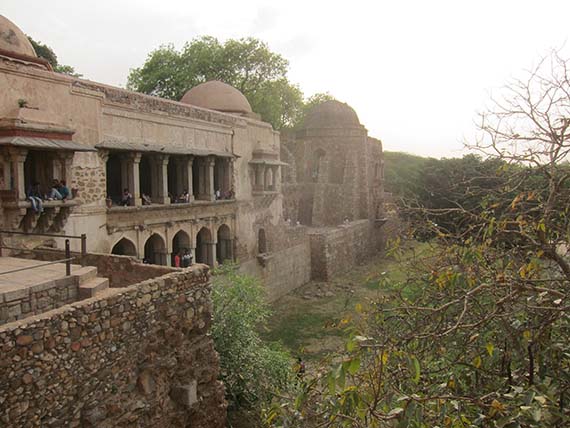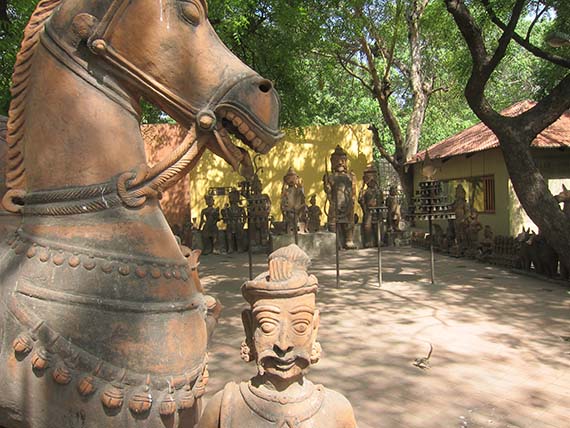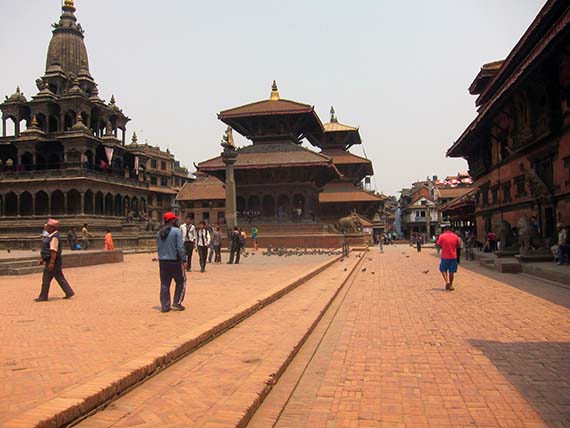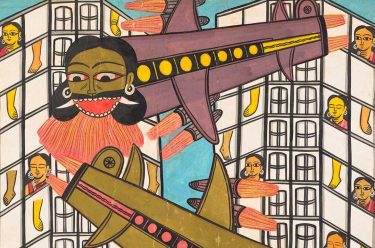
India has remained a pivotal part of the history of the APT. April last year, I travelled to India with Maud Page, Deputy Director, Collection and Exhibitions during the Indian general election, the largest election in human history, eager to see what was new and hoping to reach outside the art centres of Mumbai and Delhi. Bangalore proved to be a dynamic and intriguing alternative, a hub for artists from southern India and home to some of the most unique commercial galleries in the country, one of its earliest artist-run residencies, and the newly built Museum of Modern Art.
India’s contemporary art infrastructure is still largely reliant on commercial galleries and a handful of private museums, and Mumbai remains the commercial gallery centre, representing a wide range of artists from the subcontinent and around the world. The recent emergence of grass-roots initiatives (some a three‑hour drive away from the commercial strip), led by a new generation of curators and successful artists, has provided a platform for discourse and experimentation, and opportunities for artists unable to afford living in the big cities, or to compete in the limited commercial market. Artist Riyas Komu, co-founder of the Kochi-Muziris Biennale in Kerala, recounted to us the fascinating birth and incredible reach of India’s first Biennale in 2012. This reiterated a growing trend to decentralise the art market in India, to offer opportunities in non-commercial and non-white cube spaces, and importantly for artists to show throughout their own country.

Delhi is also home to a string of high-end galleries that feature some of the nation’s most successful artists, as well as it’s major historical and modern art museums. Other organisations, such as the National Crafts Museum, the Indira Gandhi Centre for the Arts and the privately run Devi Art Foundation in nearby Gurgaon, revealed the many diverse indigenous art traditions that continue to be produced in very contemporary ways around the country. This will be explored in APT8 through a special focus, which will make links to other rich indigenous practices throughout the region.
Geeta Kapur, one of India’s most respected curators and critics, graciously talked to us about the legacy of the APT’s engagement with India. Delhi is also a gateway to the north and it’s here that we were able to consult about exciting artists working in Pakistan with Salima Hashmi, one of the leading arts writers and academics in the country.

The subcontinent tour ended with a few days scouting in Kathmandu, the first time APT research has been conducted in Nepal. An obvious lack of infrastructure here, in contrast to its larger neighbour, was immediately apparent. However, the growing Artmandu: Kathmandu International Art Festival has finally provided a stage where local artists are able to realise ambitious projects and gain exposure to artists from around the world. Environmental, labour and socioeconomic concerns are powerful influences on many of the artists working in the city. A guided tour of the City Museum Kathmandu, just days before it opened, as well as an opening at the Kathmandu Contemporary Arts Centre, amongst the ancient buildings of Patan, provided an incredible glimpse into the fast-growing arts community.
A short time on the Indian subcontinent is a reminder of the vast scale and diversity of its arts landscape with ongoing social and economic pressures. A refreshing focus away from the conventional and commercial centres seems to be gaining momentum, while the region continues to offer new hubs of artists looking to share their work across the world.
Tarun Nagesh is Associate Curator, Asian Art, Queensland Art Gallery | Gallery of Modern Art.
